Hydrangea paniculata Sunday Fries
“Strawberry ice cream” is the name given to the hydrangea paniculata “Sundae Fraise” due to its pale pink flowers, reminiscent of a delicious dessert.Created on the basis of “Vanilla Fries”, the new product of the French selection was loved by summer residents and landscape designers for the beauty of a long wave of flowering, compactness and simple agricultural technology.
| Content:
|
LUXURIOUS HYDRANGEA SUNDAY FRIES. Video review and description of the variety:
Description of the variety
The variety is medium-sized and, thanks to its compact size, holds its shape well even in bad weather. Burgundy shoots are powerful, durable, and hold heavy, lush panicles of inflorescences. The leaf blade is dark green, pointed in shape. The leaves are slightly hairy on top and much more pubescent on the underside.
|
Hydrangea paniculata "Strawberry Sundae" (Hydrangea paniculata "Sundae Fraise") |
The inflorescences are paniculate, large (up to 30 cm), pyramidal in shape. Depending on the flowering period and growing conditions, the flower clusters gradually change color from white to pink. The buds are dense, up to 2.5 cm in diameter, four-petaled.
Features of the Sunday Frize variety
- Thanks to its burgundy shoots, bright dark green foliage and spherical crown, even a non-flowering bush looks very impressive.
- The strong shoots are erect, hold their shape well, and do not hang to the ground under the weight of the inflorescences.
- Early flowering variety. A long wave of flowering pleases the eye from June until the onset of cold weather. A pet can simultaneously display several shades of panicles: white, pinkish and crimson. It can please you with flowering already in the first year of growth.
- Shows high resistance to diseases and pests.
- Feels good both in sunny areas and in partial shade.
- It is moisture-loving and requires regular, abundant watering.
Landing
For good development of the root system, before planting, it is recommended to place the seedling in the growth stimulator “NV-101” for 2 hours (1 drop of substance per 1 liter of water). You can use “Kornevin”, “Epin” according to the instructions.
Panicle hydrangeas are planted both in spring and early autumn.
- Determine the landing site. You can plant them in sunny areas, or you can decorate any shady corners of the garden.
- Dig a planting hole; its size should be 2 times larger than the root system of the seedling.
- Drainage (expanded clay, small pebbles) is poured onto the bottom to prevent stagnation of water and rotting of the roots.
- 2/3 of the hole is filled with soil mixture, which includes:
- compost;
- garden soil;
- peat, it acidifies the soil well;
- vermiculite, like a sponge, absorbs moisture and, if necessary, releases it to the roots;
- complex fertilizers.
- The ingredients are thoroughly mixed and poured generously with water.
- The seedling is placed in the center of the planting hole, carefully spreading the roots in different directions.
- Fix the bush by tying it to a support peg.
- Cover the seedling with the remaining soil mixture, carefully compact the soil so that the roots are in close contact with the ground, and water generously.
- To retain moisture, a moat is made around the seedling, and the tree trunk circle is covered with mulch (hay, peat, straw, coniferous tree bark).
|
Planting a hydrangea seedling |
Important! The optimal month for planting is April. Since “Sunday Frize” is a moisture-loving plant, it is recommended to choose places with a shallow groundwater level!
Care
Sundae Fraise hydrangea will respond to the correct agricultural technology with a healthy appearance and a long wave of lush flowering.
- Watering. It thrives in abundantly moist soil, so watering is done regularly, avoiding waterlogging. Experts recommend settling tap water; they advise not to use rain water. After each moistening, the tree trunk circle must be carefully loosened to prevent the formation of a crust.
- Feeding. By introducing the necessary fertilizers into the soil, the plant becomes resistant to diseases, all parts are radiant with health and decorativeness. The ideal option is alternating organic and mineral fertilizers. They begin feeding immediately after the snow melts to stimulate growth. To do this, use an infusion of cow manure or bird droppings.
Attention! Bird droppings are very aggressive, you need to dilute it with water in a ratio of 1:20, otherwise you can burn the roots!
Mineral supplements are given during the period of the beginning and continuation of flowering; superphosphate is used, adding 80 g of fertilizer per 1 square meter. m. Feeding is stopped closer to autumn so that the plant calms down in growth and begins preparing for wintering.
- Trimming. Necessary for removing diseased or broken shoots that did not survive the winter, as well as for increasing the size of panicles. Young seedlings do not need pruning, and after reaching the age of three they should be done annually. The more stems, the smaller the inflorescences will be.
Pruning hydrangea
Don't forget to read:
Reproduction
It is not difficult to obtain a specimen of paniculate hydrangea “Sunday Frize”; it is enough to master the basics of cuttings or use the method of propagation by layering.
Watch a video about cutting hydrangeas:
Propagation by cuttings. In early autumn, when pruning, powerful shoots are left, weak shoots are used for cuttings. An oblique cut is made on the cutting from below, the lower leaves are removed, and a straight cut is made above the second pair of leaves (they are cut in half). The cuttings have no roots, so to reduce moisture evaporation, the leaves are cut off. The prepared material is placed for a day in the rooting agent “Epin” or “Kornevin”. Next, the cuttings are inserted into the soil up to the top leaves. For better rooting, pets are covered with cut plastic bottles.
|
Propagation of hydrangea by cuttings |
Reproduction by layering. Choose a healthy, strong shoot, press it to the ground with staples and sprinkle it with soil. For better rooting, a circular cut is made on the stem at the point of contact with the ground. In a year, the seedling will already have its own root system. It is separated from the mother plant and planted in a permanent place.
|
Reproduction by layering |
Frost resistance and preparation for winter
The frost resistance of Sunday Frize hydrangea is average, so it is better to insulate it for the winter. Before sheltering, it is necessary to prepare the bush itself for wintering:
- trim diseased and dry branches;
- perform moisture-recharging irrigation (to prevent roots from freezing);
- pour a 5-10 cm layer of mulch (sawdust, coniferous tree bark) into the tree trunk circle.
An adult plant is fenced with a frame, which is wrapped in any fabric covering material.
It is advisable to bend the young seedling to the ground, placing spruce branches under it, cover it with covering material on top, and place spruce branches on it to retain snow.
|
Sheltering the Sunday Fries hydrangea bush for the winter |
For reference! In the southern regions, hydrangea is not covered; it easily tolerates winter in local climatic conditions. When grown in northern regions, shelter is required.
Diseases and pests
Like all hydrangea varieties, Sundae Fraise is susceptible to disease and pest attack. Of the diseases, the most dangerous are:
- Chlorosis. The disease occurs when growing in an alkaline environment. At the initial stage, the leaves turn pale and subsequently become covered with brown spots. Water under the root with an acidified solution of iron sulfate (iron chelate) or potassium nitrate.
- Downy mildew (downy mildew). The upper side of the leaf is covered with spots ranging from light gray to brown, the underside is affected by a powdery coating. Spray with fungicides “Abiga-Pik”, “Fitosporin-M”, “Ordan”.
- Rust. Occurs when there is excess nitrogen in the soil. Yellow-brown spots on the leaves are a characteristic sign of the disease. Spray with copper-containing preparations “Falcon”, “Hom”, “Topaz”.
The main pests of hydrangeas that cause considerable harm are:
- Spider mite. When a parasite appears, parts of the plant become covered with a thin web. At the initial stage, the lesions are sprayed with a soapy mixture. In difficult situations, the drugs “Molniya” and “Fitoverm” are used.
- Leaf aphid.At a severe stage of infection, colonies of pests cover all parts of the plant and suck out the juices. You can try using soapy water, but it is best to immediately resort to the insecticides Fitoverm and Akarin.
Note! Before purchasing medications, you need to check the expiration dates. When using, strictly follow the instructions provided by the manufacturer.
Reviews
On forums on the Internet you can find many reviews about the Sunday Frize hydrangea:
“I bought Sundae Fraise as a rooted cutting and bloomed in the first year. This year I was very pleased with the flowering. The bush looks good even in a non-flowering state, since it has dark red shoots and darker and more rounded foliage, compared to other varieties. And in general, he looks so stocky and strong.”
“The variety Sunday Fries attracted attention because it turns out to be a not very tall bush with a compact crown that does not grow to the sides and does not spoil the appearance at all. Caring for such a hydrangea really turned out to be easy - there is nothing special: it loves light, water and fertilizing, and does not tolerate wind. It turns out to be a bush, 1 m high, the flowers are lush and very pleasing. The impression is that you are somewhere in a southern garden.”
Using hydrangea in landscape design
The beauty "Sunday Fries" is in great demand due to its high decorative value. Participates in compositions with flowers, shrubs, trees, and also looks great in single plantings.
As a self-sufficient plant, it looks great on a green lawn. It will look bright against the background of conifers, which will emphasize the beauty of flowering. Planted in a row, they perfectly decorate garden paths. Many gardeners use hydrangea to create a hedge.
The best neighbors in combined plantings will be hostas and astilbes. Such compositions look good in front of a window, next to the house.
|
— — — —
|

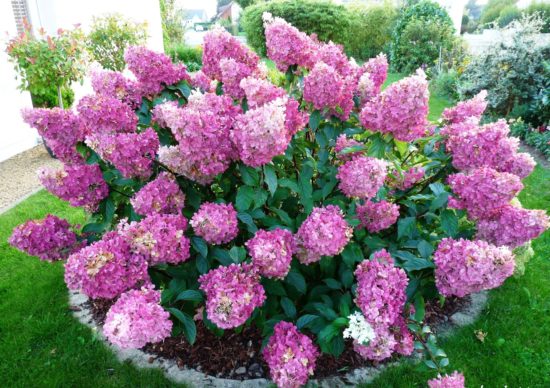
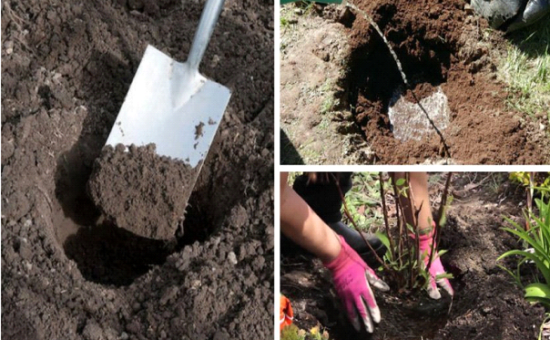
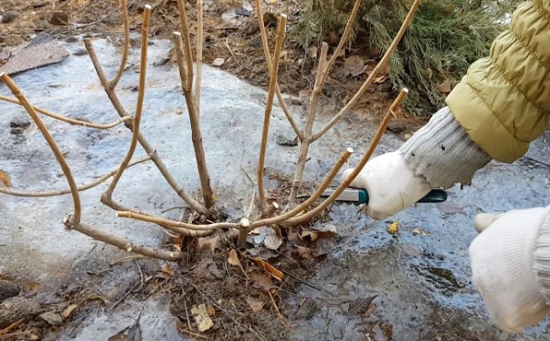
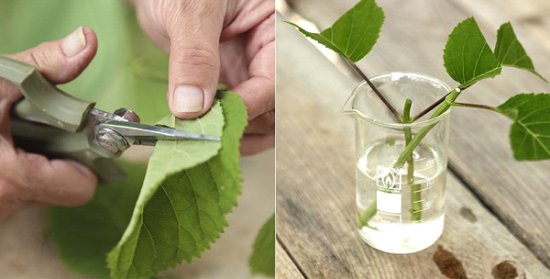
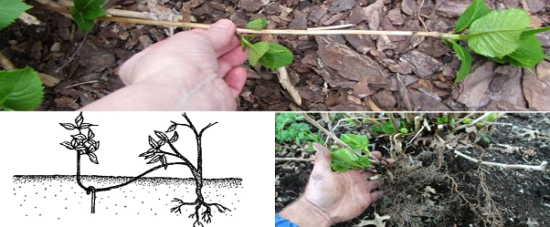
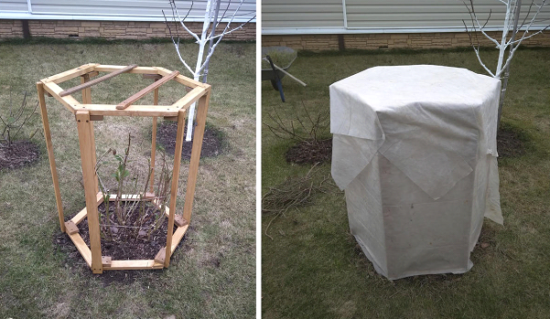
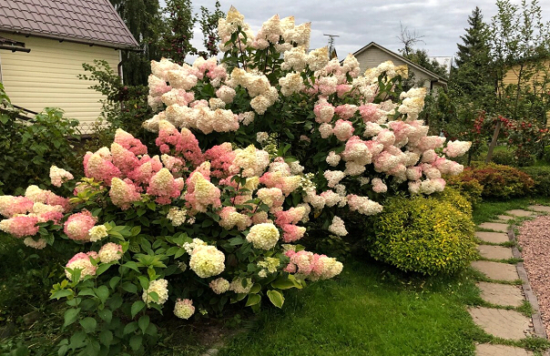
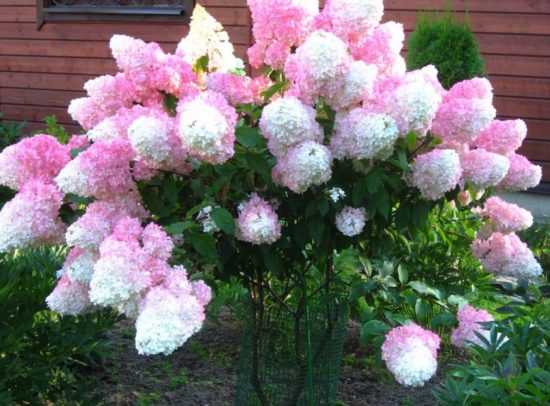
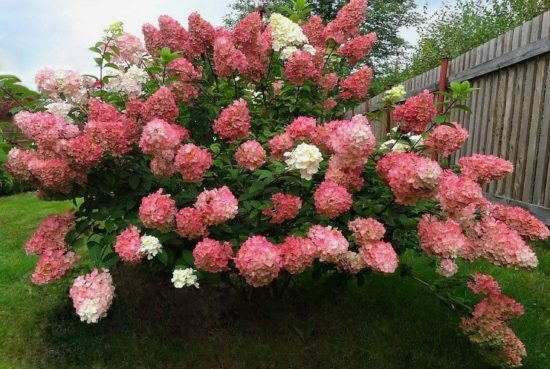
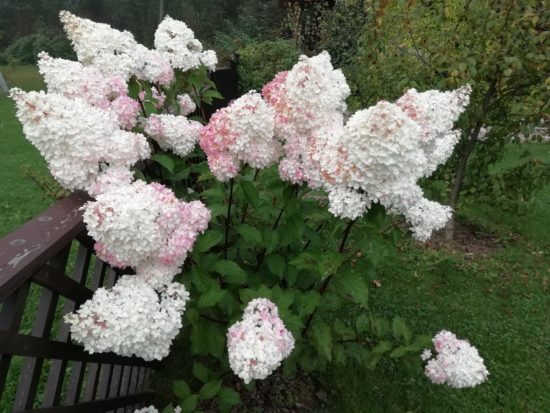
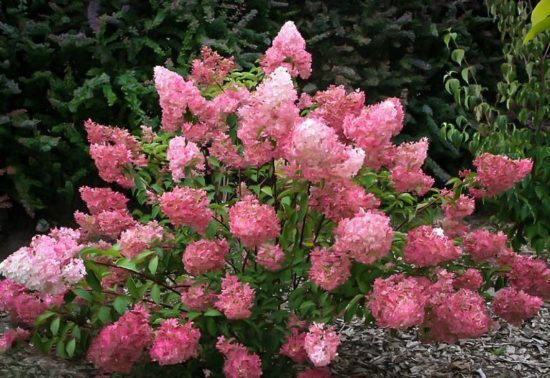


 (2 ratings, average: 3,50 out of 5)
(2 ratings, average: 3,50 out of 5) CUCUMBERS NEVER GET SICK, I'VE BEEN USING ONLY THIS FOR 40 YEARS! I SHARE A SECRET WITH YOU, CUCUMBERS ARE LIKE THE PICTURE!
CUCUMBERS NEVER GET SICK, I'VE BEEN USING ONLY THIS FOR 40 YEARS! I SHARE A SECRET WITH YOU, CUCUMBERS ARE LIKE THE PICTURE! You can dig a bucket of potatoes from each bush. Do you think these are fairy tales? Watch the video
You can dig a bucket of potatoes from each bush. Do you think these are fairy tales? Watch the video
 How our fellow gardeners work in Korea. There is a lot to learn and just fun to watch.
How our fellow gardeners work in Korea. There is a lot to learn and just fun to watch. Eye trainer. The author claims that with daily viewing, vision is restored. They don't charge money for views.
Eye trainer. The author claims that with daily viewing, vision is restored. They don't charge money for views. A 3-ingredient cake recipe in 30 minutes is better than Napoleon. Simple and very tasty.
A 3-ingredient cake recipe in 30 minutes is better than Napoleon. Simple and very tasty. Therapeutic exercises for cervical osteochondrosis. A complete set of exercises.
Therapeutic exercises for cervical osteochondrosis. A complete set of exercises. Which indoor plants match your zodiac sign?
Which indoor plants match your zodiac sign? What about them? Excursion to German dachas.
What about them? Excursion to German dachas.